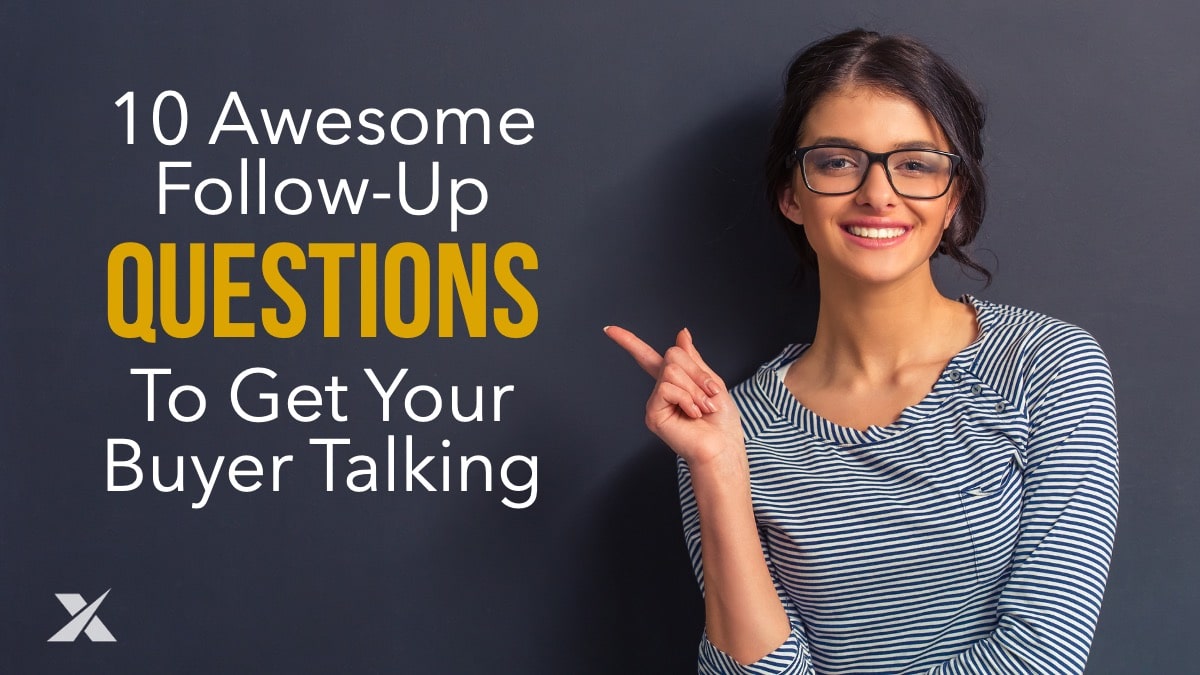Follow-up questions get you the whole story. Of course, asking good questions is the heartbeat of a good sales call. However, many salespeople can become so enamored with asking their primary questions they fail to get the full story. Why? Because most buyers don’t disclose everything from answering one question. Follow-up questions get you the whole story. Ideally, you drill down to learn as much as you can about the response they gave to your first question.
Follow-up Questions
The art of asking follow-up questions separates the rookies from sales superstars. Acquire as much information about the issues your buyer wants addressed. In addition, you also want their perspective on those issues and the types of solutions that they expect.
1. What do you mean by that? How so?
Use these to clarify their answer. Buyers like this because you show sincere interest. You show that you want to learn more. I love this question because I learn so much about the buyer’s business and objectives. Unfortunately, too many salespeople are focused on themselves. This follow-up question benefits you and the buyer.
2. Why is that important?
You tap into their perceptions about relevance and priority. You may not initially think an issue or solution is important to them. This question clarifies that for you. Now you can apply your solution with the correct emphasis on what’s truly important to the buyer.
3. Tell me more…
Not a question, but a great statement to use after an initial response from a buyer or influencer. It solicits more information, expands their answer and opens up the possibility for more drill down. When you say this, the buyer will usually provide more information that they wouldn’t have unless asked. By asking, you tap into meaningful information that expands your knowledge of their issues and personal wants. That’s the secret to asking great questions: getting the buyer to do most of the talking… and you do most of the listening.
4. Why?
Sometimes a single word can make all the difference in a conversation. This gets to the heart of motive. Yes, they may need your product or service. Yes, they may need a solution. But why? What is their perspective on the driving motive to make a change?
5. How often does that happen? How much?
These are quantity follow-up questions. The answers to these questions should give you a sense of proportion. If a company is losing money, you want to know how much. If their technology is failing, you want to know how often. These simple questions can provide you with the justification for the buyer spending money with you.
6. Who with?
This can refer to individuals, vendors, clients, or competitors depending on the context. Use this to clarify the people in a particular engagement or role with the buyer. Is it a good relationship? Did they perform well or create a disruption in production? You’re not looking to bad mouth anyone. You simply want to know all the players, influencers, users, suppliers and competitors that can impact the sale.
7. How have you dealt with that in the past?
You never want to recommend solutions the buyer has already tried. When discussing solutions, find out what they’ve already done. Most people in business are smart enough to have tried to resolve issues themselves. Review what they’ve done to see how your solution is different than what they’re tried before. You may find that your solution is the same, but the application of it may be the difference.
8. What was the outcome?
Great follow-up question to the previous follow-up question. It’s also a great catalyst for even more follow-up questions:
- How much did it cost?
- Why did it succeed or fail?
- What would you have done differently?
- What did you learn?
- How will you move forward from here?
9. What does that mean to you?
Personal reward and avoidance of looking bad are very strong drivers for many decision makers. This is the effect portion of a cause and effect conversation. What benefits would they receive from a successful solution? What risks would they face if they chose you? You want to find out how to create the greatest win for them personally and minimize the risk.
10. Is there anything else?
Finally, this is the catch all question. Once you’re finished with the initial conversation, ask if they have any other pressing issues that you didn’t discuss that could impact the deal. You never know when something out of left field can surprise you because you failed to ask this question.
Keep these questions handy for your next sales call. Asking better questions and good follow-up questions equips you to extract more information effortlessly from your buyer. More knowledge leads to more value.

